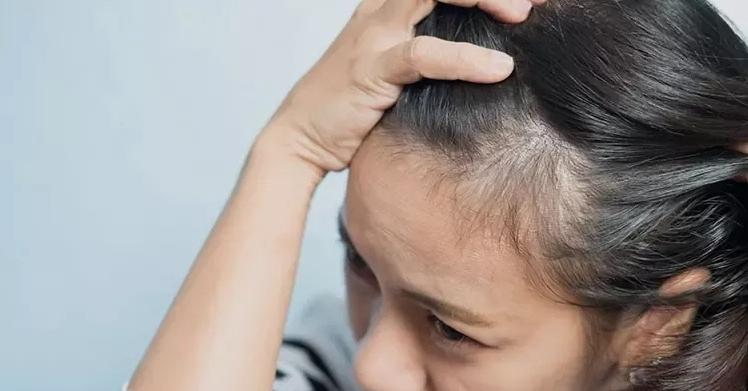No one wants to lose their hair: it’s such an important part of a person’s appearance and identity. But unfortunately, many people will experience hair loss for a variety of different reasons. Some individuals’ hair may fall out due to predictable genetic patterns that make many of their family members bald. Others experience it due to illness, stressors, pregnancy, or hormonal issues. Read on to learn more about the different causes of hair loss, as well as some treatment options.
Genetic Causes
Androgenetic alopecia (aka male pattern baldness) and female pattern hair loss are caused by a combination of genetics, hormones, and aging. But genetics are the primary factor — a majority of individuals with this type of hair loss carry certain genes and have relatives with the condition. One popular myth is that hair loss comes from one parent’s side of the family. But you can actually inherit the hair loss gene from either your mother or father.
Some studies have associated male pattern baldness with the androgen receptor gene. Other studies have found over 60 genes that could play a role in genetic hair loss in men. In women, less research has been done to identify the specific genetic markers or genes involved in female pattern hair loss. It is, however, thought to be caused by a different gene than the one that causes male pattern baldness.
In both male and female pattern baldness, genetic factors cause miniaturization of the hair follicles. This means the hair follicles start shrinking and get narrower and narrower until the hair becomes weak and susceptible to breakage. Eventually, hair can’t grow past the surface of the scalp, the follicles become dormant or die, and baldness occurs.
In male pattern baldness, follicle miniaturization leads to loss of hair at the crown and the front of the head. In female pattern hair loss, the hair thins all over the scalp and may form a receding hairline in a characteristic “M” shape. Approved treatment options for either condition include topical minoxidil, oral finasteride, and hair restoration procedures.
Hormonal Imbalances
Besides genetics, hormones also contribute to male and female pattern baldness. In people assigned male at birth, a hormone called dihydrotestosterone is the mechanism that causes hair follicles to miniaturize. DHT might likewise be a factor in female pattern hair loss, although that role is less well-understood. Finasteride, a DHT-blocking medication, can play a vital role in preventing or reversing male pattern baldness.
In people assigned female at birth, the loss of estrogen may be a cause of hair loss. That’s why, as some women age and estrogen declines, their hair may be more likely to thin or fall out. While estrogen levels increase during pregnancy, many pregnant women still lose hair. This may be due to other hormone changes or factors like iron deficiency and stress.
Thyroid disorders can also cause hair loss all over the scalp in people of any gender. When your body has either too much or too little thyroid hormone, it can prompt telogen effluvium, or acute hair shedding. Thyroid-related hair loss is usually treated with a combination of medication and diet. Individuals with thyroid conditions may be able to prevent or reverse the loss of hair by including more iron in their diets.
A long list of endocrine disorders can cause hair loss, too. These can include polycystic ovary syndrome, diabetes mellitus, growth hormone deficiency, and Cushing syndrome. Treatments usually consist of medications that correct the underlying hormonal imbalance. They may also include dietary changes or supplements and topical products like minoxidil foam or solution.
Other Causes of Hair Loss
Many medical conditions can cause hair loss in individuals at any time, regardless of gender. These run the gamut from eating disorders to diabetes to syphilis to lupus. Treatments or medications for certain illnesses can make hair fall out as a side effect. These include chemo and radiation therapy for cancer patients, as well as medications such as blood thinners, antidepressants, and beta blockers. Each causes hair loss by a different mechanism in the body.
Poor diet, stress, smoking, and smoking can all produce varying types of hair loss. If the body doesn’t get certain nutrients from food, like biotin, your hair can become brittle and break or fall out. Vitamin C deficiency can cause poor iron absorbency, and poor iron absorbency or iron deficiency can also prompt the loss of hair. Zinc, copper, folate, and riboflavin deficiencies are associated with hair loss as well.
The exact mechanisms by which stress causes hair loss is unclear, but it seems to shift the hair follicles into a sudden telogen, or resting, phase. This causes hairs to shed, resulting in abrupt hair loss during periods of stress. Stress-related hair loss may also be due to certain mechanisms that temporarily prevent the body from delivering key nutrients to hair follicles.
There are a number of different ways in which smoking can damage hair or cause it to fall out. One is that smoking causes vasoconstriction and reduces blood flow to the hair follicles. With less blood, the follicles receive less of the oxygen and nutrients they need to grow healthy hair. Smoking likewise causes oxidative stress on the body, releasing proteins called cytokines that damage hair. Hair becomes weaker, exacerbating breakage and hair loss that might be happening for other reasons.
Healthy Body, Healthy Hair
Though some types of hair loss can’t be prevented, in general, a healthy lifestyle can reduce the risk or rate of it. Eating a balanced diet, avoiding alcohol and smoking, getting enough sleep, and managing stress can all help. Depending on the type of hair loss you have, prevention and treatment options will vary. For the best results, make sure you know the cause of your hair loss before attempting to treat or correct it.

